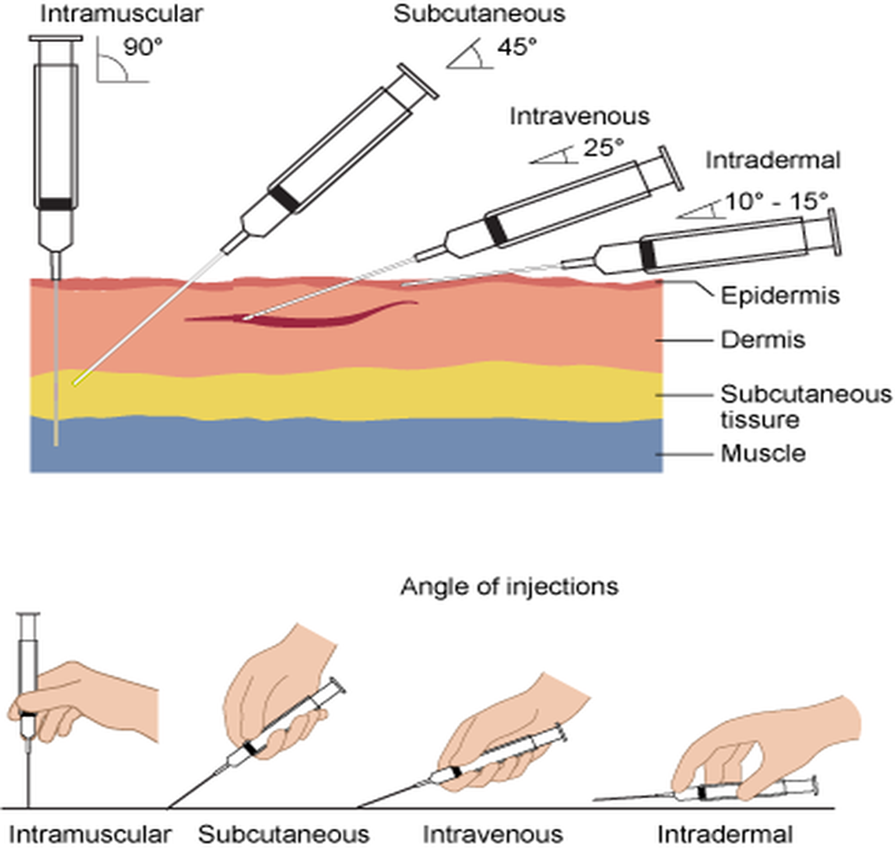Blood collection tubes fill correctly during venipuncture due to which of the following factors?
The high pressure in the arterial system
The high pressure in the venous system
The positive pressure created by the tourniquet
The negative pressure within the tube
The Correct Answer is D
Choice A reason:
The high pressure in the arterial system is not a factor in the filling of blood collection tubes during venipuncture. Arterial blood is not typically collected using evacuated tubes; these are used for venous blood collection, where the pressure is lower.
Choice B reason:
While the venous system does have pressure that aids in blood flow, it is not the high pressure that causes blood collection tubes to fill. Venous pressure is relatively low compared to arterial pressure, and on its own, it is not sufficient to fill the vacuum tubes used in venipuncture.
Choice C reason:
The positive pressure created by the tourniquet can help engorge the veins, making them easier to access, but it does not directly cause the blood collection tubes to fill. The tourniquet's role is to assist in vein visualization and palpation rather than in the filling of the tube.
Choice D reason:
The negative pressure within the tube is the correct factor that causes blood collection tubes to fill during venipuncture. When the needle punctures the patient's vein and then the tube stopper, the vacuum in the tube pulls blood into it until the vacuum is exhausted or the tube is filled. This is why it is essential not to allow the tube contents to contact the stopper, as backflow into the venous system can cause adverse reactions.
Nursing Test Bank
Naxlex Comprehensive Predictor Exams
Related Questions
Correct Answer is A
Explanation
Choice A reason:
Chilling the sample is the correct method for preparing a lactic acid sample for processing and transportation. Lactic acid levels can continue to change after the blood is drawn due to ongoing cellular metabolism. Chilling the sample slows down this metabolism, preserving the accuracy of the lactic acid measurement. The sample should be placed on ice or in a refrigerated environment as soon as possible after collection.
Choice B reason:
While protecting the sample from light is important for some types of specimens, it is not the primary concern for lactic acid samples. The key factor for lactic acid stability is temperature control, not light exposure. Therefore, while it may be beneficial to keep the sample out of direct sunlight, chilling it is the priority to prevent changes in lactic acid levels.
Choice C reason:
Attaching a heat block to the sample is not a recommended method for lactic acid samples. Heat can increase metabolic activity, potentially altering the lactic acid levels in the sample. This would lead to inaccurate results, as the goal is to preserve the state of the sample at the time of collection.
Choice D reason:
Freezing the sample is not typically recommended for immediate processing and transportation of a lactic acid sample. While freezing can preserve certain types of specimens for long-term storage, it is not necessary for short-term transport and can cause issues such as hemolysis, which may interfere with the test results.
Correct Answer is C
Explanation
Choice A reason:
Having the bevel down at a 30° angle is not the correct needle position for venipuncture. The bevel of the needle should be facing up to allow for a smoother insertion and to minimize the risk of damaging the vein or causing discomfort to the patient.
Choice B reason:
Positioning the bevel up at a 45° angle is not recommended for venipuncture as this angle is too steep and could lead to the needle penetrating through the vein, potentially causing a hematoma or other complications.
Choice C reason:
The bevel up at a 30° angle is the correct position for venipuncture. This position allows the phlebotomist to insert the needle with the bevel facing upwards, which is the sharpest part of the needle, ensuring a clean entry into the vein. The 30° angle is shallow enough to enter the vein without going through it and causing injury.
Choice D reason:
A bevel down at a 45° angle is incorrect for the same reasons as choice B. Additionally, with the bevel down, the non-beveled side, which is duller, would make the initial contact with the skin, potentially causing more pain and making it more difficult to penetrate the vein.

Whether you are a student looking to ace your exams or a practicing nurse seeking to enhance your expertise , our nursing education contents will empower you with the confidence and competence to make a difference in the lives of patients and become a respected leader in the healthcare field.
Visit Naxlex, invest in your future and unlock endless possibilities with our unparalleled nursing education contents today
Report Wrong Answer on the Current Question
Do you disagree with the answer? If yes, what is your expected answer? Explain.
Kindly be descriptive with the issue you are facing.
